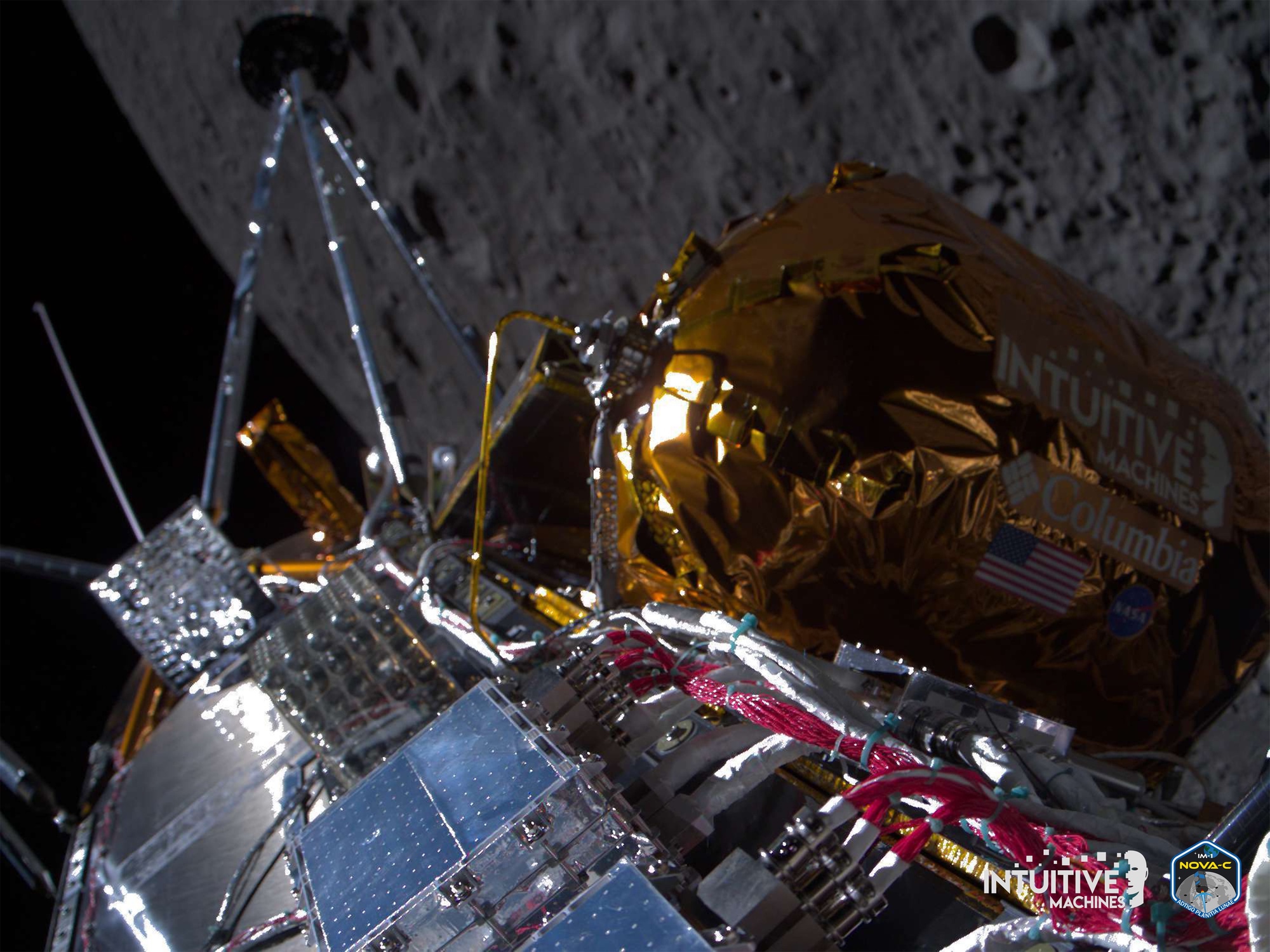
Updated 8:30 p.m. with new landing time.
WASHINGTON — Intuitive Machines’ first lunar lander mission entered orbit around the moon Feb. 21, setting up a landing attempt in a day.
The company announced on social media that the Nova-C lander, named Odysseus, performed a 408-second burn of its main engine, placing the spacecraft into a circular orbit around the moon at an altitude of 92 kilometers. The maneuver, which changed the spacecraft’s velocity by 800 meters per second, was completed with an accuracy of 2 meters per second.
Intuitive Machines did not disclose the exact time of the burn in its announcement at 10:20 a.m. Eastern. The spacecraft had been on a trajectory that would have taken it about 100 kilometers from the moon around 9:40 a.m. Eastern. The insertion burn came after two trajectory correction maneuvers to refine the spacecraft’s path to the moon, with the company concluding a third planned maneuver was not needed.
The engine, which uses liquid oxygen and methane propellants, was tested in space for the first time in a commissioning maneuver Feb. 16. Company executives said before the launch that successfully completing that test would give them greater confidence that the engine would work as required for a soft landing.
With the spacecraft now in orbit, Intuitive Machines is now moving ahead with plans for a landing attempt on Feb. 22. The landing, near the Malapert A crater in the south polar region of the moon, was originally scheduled for 5:49 p.m. Eastern that day. The company said late Feb. 21 that it revised the landing time to 5:30 p.m. Eastern after flight controllers “analyzed the post-Lunar Orbit Insertion engine burn data and updated the anticipated flight maneuver timing.”
The IM-1 mission is carrying six NASA payloads through NASA’s Commercial Lunar Payload Services (CLPS) program under a $118 million task order. The spacecraft is also carrying six payloads for non-NASA customers, such as artwork, a data archive and a small astronomical telescope. If the spacecraft does land successfully, Intuitive Machines expects to operate it for about a week before the sun sets at the site, ending the mission.
If the landing is successful, Intuitive Machines will become the first non-governmental entity to successfully soft-land on the moon. The Beresheet lander by Israel’s SpaceIL crashed during an April 2019 landing attempt, while the HAKUTO-R M1 lander from Japan’s ispace crashed during its landing attempt in April 2023. Astrobotic’s Peregrine lander, which also had a NASA CLPS task order, suffered a propellant leak shortly after its Jan. 8 launch and aborted plans to orbit and land on the moon, reentering about 10 days after launch.
Despite the successful orbital insertion, shares in Intuitive Machines fell 15% on the Nasdaq exchange Feb. 21, including a sharp drop around the anticipated orbital insertion time. The company’s shares are still up nearly 90% from a week ago.
- SEO Powered Content & PR Distribution. Get Amplified Today.
- PlatoData.Network Vertical Generative Ai. Empower Yourself. Access Here.
- PlatoAiStream. Web3 Intelligence. Knowledge Amplified. Access Here.
- PlatoESG. Carbon, CleanTech, Energy, Environment, Solar, Waste Management. Access Here.
- PlatoHealth. Biotech and Clinical Trials Intelligence. Access Here.
- Source: https://spacenews.com/im-1-lander-enters-lunar-orbit/



